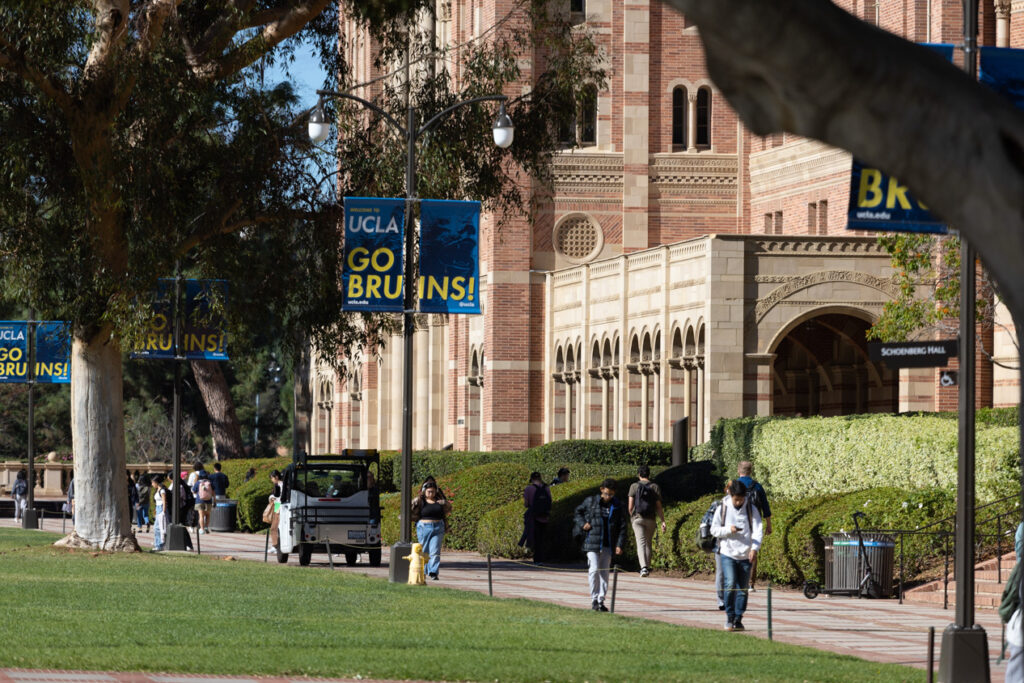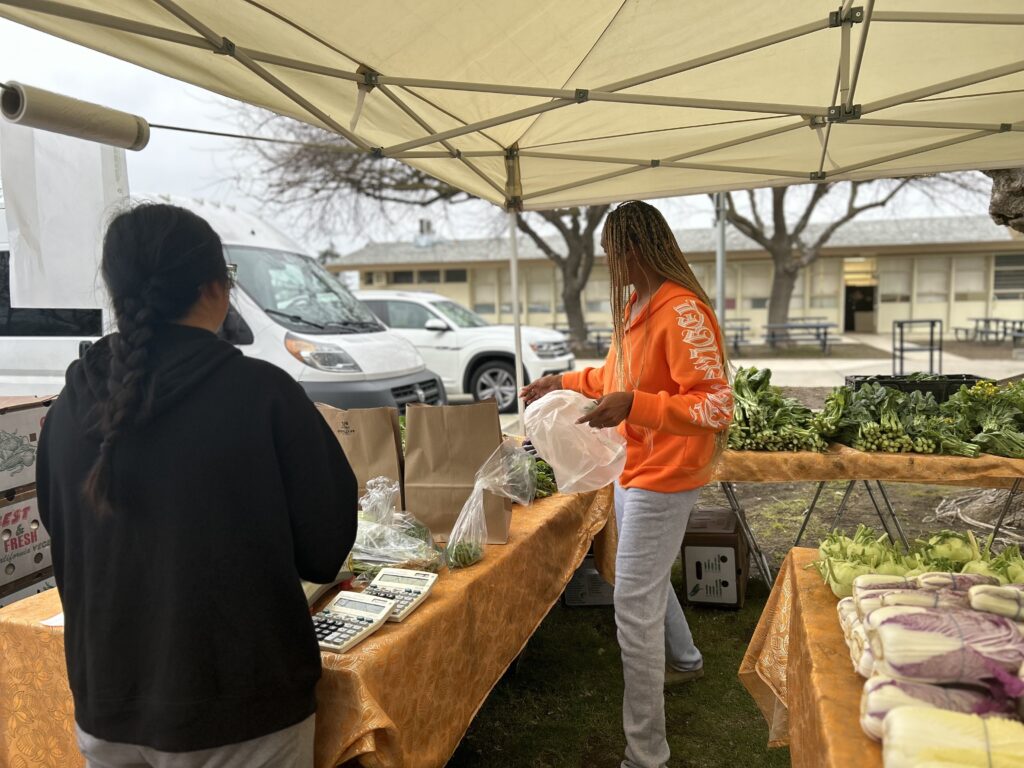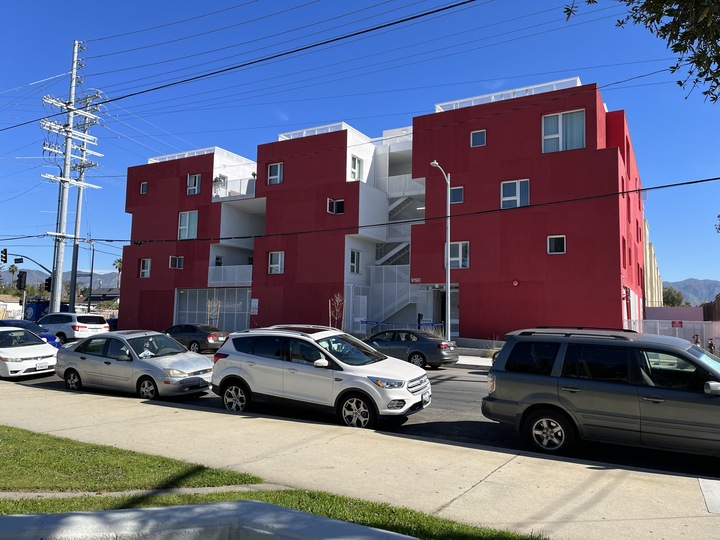
UCLA campus in Westwood on Nov. 18, 2023.
Credit: Julie Leopo / EdSource
Top Takeaways
- Assembly Bill 7, which would allow colleges and universities to give preference to students who are descendants of slavery, cleared the Senate Education Committee.
- Affirmative action is not permitted at the state or federal level, but proponents say being a descendant of a slave isn’t a proxy for race.
- Experts doubt the bill will become law and anticipate legal challenges.
A bill that would give California colleges and universities an option to provide preference in admissions to descendants of slavery has cleared the state’s Senate Education Committee with a 5-2 vote after being passed in the Assembly with overwhelming support. But as the bill moves to the Judiciary Committee, even its proponents say they are pessimistic that it will become law at a time of increasing scrutiny over measures suggesting racial preferences.
Assembly Bill 7, authored by Assemblymember Isaac Bryan, is the first statewide measure of its kind to address the harms of slavery, said UCLA education professor Tyrone Howard, and it has been backed by nearly two dozen organizations, including the California Federation of Teachers and the University of California Student Association.
“Disparities in admissions persist and reflect deeply rooted structural inequalities, including the afterlives of slavery. In addition, California had a long history of legacy admissions, up until last year, that favored students who came from wealthy and well-connected family situations,” Bryan said at Wednesday’s hearing. “[AB 7] empowers universities with the option, not a mandate, to acknowledge and respond to this historical context when evaluating applicants.”
Lance Christensen, the vice president of Government Affairs & Education Policy at the California Policy Center, said he doesn’t see the need for such a measure in California — and felt the bill “looks to be an underhanded approach at racial preferences.”
“I think we’re getting close to the place where we should stop race-baiting a lot of our bills. If California truly is a terrible or bad actor in the issue of slavery, we should do everything we can to fix and address those issues,” Christensen said. “And there are places where we were really not good to a lot of Black people, Asians, Native Americans and other disparate people. This is not one of those places where I think that we should focus our time and attention.”
Organizations such as the Californians for Equal Rights Foundation also previously expressed concerns about AB 7 leading “to de facto racial preferences without facilitating any meaningful changes to ameliorate structural problems at the K-12 level, including declines in academic performance and the persistent achievement gaps among different demographic groups.”
Neither state nor federal law allows a student’s race to be a factor in admissions, and affirmative action continues to be barred in California under Proposition 209, which 57.2% of voters opted to keep in place in 2020.
But supporters of the bill said at Wednesday’s hearing that descendants are not a “proxy for race” and “could look like anybody in this room,” noting that Indigenous people also have histories of being enslaved. Meanwhile, not all Black Americans have ancestors who were slaves.
The bill did not receive any formal opposition at Wednesday’s hearing.
“We have seen reparations for different communities, and we’ve seen the benefits,” said Senate Education Committee Chair Sasha Renée Pérez, noting reparations measures following Japanese internment during World War II. “Unfortunately, we have not seen the same type of investments placed towards those that are descendants of slavery and Black Americans across the country.”
Proving lineage
AB 7 is unique because it specifically pertains to students who are descendants of slavery, Howard said. But, even if the bill passes, qualifying for any preference in admissions could be difficult, and Christensen added that ancestral records are often “incomplete or scattered at best,” which could lead to logistical issues.
“Admissions reviewers have a lot to already digest when they’re going through the process of admissions as it is — when you think about transcripts and grades and coursework and extracurricular activities,” Howard said. “And so now, to add to that, you’ve got to prove lineage. That might prove to be a bit challenging.”
Any preference in admissions would apply to students who can show a clear lineage to someone who was subjected to American chattel slavery before 1900, according to the bill analysis.
In order to receive preference, students will also have to meet at least one other criteria, which includes having an ancestor who was emancipated, acquiring freedom through abolition measures, being a fugitive from bondage, considered contraband or “rendered military or civic service while subject to legal restrictions based on ancestry historically associated with slavery.”
When it comes to affirmative action, there “is this misnomer that somehow a large number of unqualified and unprepared … Black students are getting these opportunities solely because of the fact of their race or ethnicity,” Howard added. “This would be one variable that would attempt to at least give some consideration.”
Potential challenges
Despite its support at Wednesday’s committee hearing, many experts are wary that the bill will not become law in the first place.
“As progressive as we are, I don’t know that we have the appetite as a state to go so far as to say, ‘Yes, we acknowledge that there are descendants in this state who are harmed by the legacy of slavery — and therefore we’re going to try to take redress by turning when it comes to college admissions,’” Howard said.
Howard pointed out that even if AB 7 is successful, the language in the bill requires that colleges and universities ensure any changes in the admissions process are in compliance with federal laws.
Given the current political climate, “Federal guidelines are not going to allow something that gives anything that resembles an advantage or an opportunity to one group of others to fly,” Howard said. “I just think that all the attacks we’ve seen on DEI, anything that’s seen in that way, I think would be dead on arrival.”
Shaun Harper, a USC professor of education, public policy and business, said he supports the measure and other efforts to secure reparations.
But, if passed, he anticipates it would face serious legal challenges, including from those who believe it violates Prop. 209 or contradicts the 2023 U.S. Supreme Court ruling against affirmative action.
“At best … it does some acknowledgment of the wrongs that have been done to enslaved Africans here in the United States,” Harper said. “Ultimately, if it doesn’t happen, or it stalls, once again, Black folks have been set up to expect some amends for the wrongdoing, and we’re going to be left once again disappointed.”









